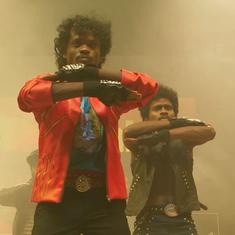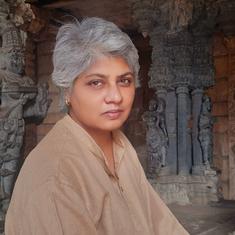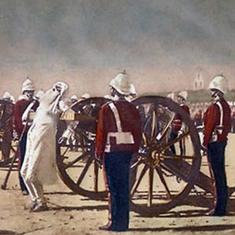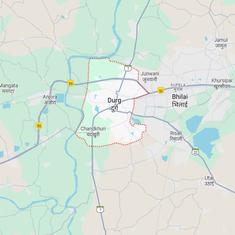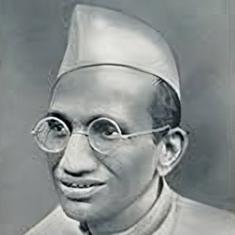In 1949, when the northern suburbs of present-day Mumbai were still expanses of forests, farms and villages, the Indian government handed over 1,300 hectares of a forest called Aarey to Bombay’s dairy development board. Under the direction of Dara Khurody, the milk commissioner of Bombay at the time, Aarey was soon transformed into Aarey Milk Colony – home of the grand Bombay Milk Scheme that revolutionised milk production and supply in India.
Khurody won the 1963 Magasaysay award for his work in the dairy industry, and a proud government turned Aarey Milk Colony into a tourist spot.
In the decades that followed, as Mumbai’s concrete jungle exploded all around Aarey and began to encroach the forest, the Milk Colony became a prized expanse of land: prime real estate material for builders, an endangered home for Adivasi villagers and the “last green lung of Mumbai” for environment-conscious citizens.
The latest conflict about development in Aarey pushed the Milk Colony into the national limelight: the state government wanted to build a metro rail car shed on 30 hectares of Aarey land, for which it would need to cut down more than 2,700 trees.
For months, Mumbai residents passionately protested against the state-run Mumbai Metro Rail Corporation or MMRC, but to no avail. On October 4, the Bombay High Court rejected pleas asking for Aarey to be recognised as a forest, and the MMRC hastily began felling trees that very night. By the time the Supreme Court ordered the state to stop cutting more trees, at least 2,141 trees had already been cut.
On October 21, the Supreme Court clarified that its order did not include a stay on construction work for the metro car shed, giving the MMRC a green signal to carry on its work in Aarey. With the final Supreme Court order on the legality of the tree-felling still pending, the contentions over Aarey will continue to make national headlines.
Had he been alive today, how would Dara Khurody – the creator of Aarey Milk Colony – respond to the fracas over the metro car shed and the cutting of Aarey’s trees?
In Mumbai, Scroll.in met Khurody’s son, 83-year-old Nawshir Khurody, to understand the history and evolution of Aarey and find the answer to that question.
How Aarey Milk Colony was born
Up to the 1940s, residents of erstwhile Bombay had to buy their milk from local suppliers – dairy farmers rearing buffaloes in squalid sheds scattered across the city. The dairy farmers lived in lofts above their cattle, and the milk they supplied was expensive and not always hygienic. “When my father was appointed as Bombay’s milk commissioner in 1946, he wanted to remove the buffaloes and sheds from the city to prevent health risks caused by polluted milk,” said Nawshir Khurody, a retired management executive who lives in his family home in south Mumbai.
A dairy expert, Dara Khurody had spent over 25 years supervising dairy farms and marketing dairy products for the government. He proposed moving all of Mumbai’s buffaloes and dairy farmers to a specialised colony where cattle could be reared and milk could be collected, processed and distributed in a systematised manner. Khurody’s proposal was accepted, land in Aarey was granted to the dairy development board and in 1951, Prime Minister Jawaharlal Nehru inaugurated Aarey Milk Colony by planting a sapling at the location.
According to Nawshir Khurody, his father personally spent time convincing Mumbai’s many buffalo rearers to move to Aarey. “In Aarey, they were given proper stables and comfortable living quarters with toilets, and a school was also built for their children,” said Nawshir Khurody. For cattle fodder, the dairy development board began growing special “para grass” on a portion of the land.
With the establishment of the Bombay Milk Scheme at Aarey, milk began to be supplied from a centralised, government-run dairy unit to milk booths across the city. Every morning, people would line up in long queues outside their local Aarey booth to collect their daily supply of milk. “Even though I was the milk commissioner’s son, my father made sure I stood in the lines to collect our milk,” said Nawshir Khurody.
To boost the supply, Dara Khurody introduced “toned milk” – a method of decreasing the fat content and increasing the quantity of milk that he had first proposed in 1941. “By diluting milk with water and skim milk powder, one litre of buffalo milk was turned into three litres of toned milk, and it made milk much cheaper for people to buy,” said Nawshir Khurody.
Crocodiles in the moonlight
The Bombay Milk Scheme model was replicated in several parts of India as well as the world over the years. Khurody, along with Amul developers Verghese Kurien and Tribhuvandas Patel, won the Ramon Magasaysay award in 1963 for their contribution to dairy development. Khurody died in 1983.
The Indian government had recognised the uniqueness of the Milk Scheme much earlier, and actively promoted it as a proud symbol of the new Indian welfare state that many dreamed of at the time of Independence.
“Aarey Milk Colony was from its beginning an attraction for locals and tourists, where people could go for picnics and buy tickets to get a tour of the processing plant, the garden, the observation point and other places in the colony,” said Sanchia deSouza, a historian from Mumbai researching on milk and urban development at the University of Toronto. Students were also brought to Aarey on school trips. “Public engagement was essential for demonstrating the trustworthiness of this modern milk supply system.”
Nawshir Khurody has his own unique memories of visiting Aarey as a young man. “My father would drive me there at night in his car to see crocodiles crossing from one lake to another in the moonlight,” he said.
‘He would have found a way’
Over the years, the state government developed more and more institutions and attractions within Aarey Colony. The area around Aarey’s main lake was branded as Chhota Kashmir, which now has its own boating club. The dairy development board established the Dairy Science Institute in Aarey, where students of agriculture can get diplomas in dairy technology.
Close to the Institute is the large New Zealand hostel for non-local students. “The hostel was built through funding from the government of New Zealand, because we would buy all the skim milk powder needed for toned milk from that country,” said Nawshir Khurody.
The central and state governments also run a veterinary college, poultry farm, bakery and several other offices in Aarey.
In 1977, the Maharashtra government carved up more than 200 acres of forested Aarey land for another industry that has come to define Mumbai: Film City. Hundreds of Indian films have been shot at the various studios, parks and natural sites of Film City, and guided tours for visitors are also a source of revenue for Maharashtra’s tourism board.

Since Aarey Milk Colony is also home to 27 hamlets where various Adivasi communities have lived long before the Milk Scheme was established, land acquisition within Aarey has frequently been controversial. In 2006, for instance, Adivasis had protested the granting of land to filmmaker Subhash Ghai for setting up the Whistling Woods film institute near Film City.
Before that, in 1999, as much as 240 acres of Aarey land was sold to Royal Palms, a real estate company that has built a luxury residential township, complete with a golf course, within Aarey. This June, the state government also cleared a plan to create an extension of the Mumbai zoo at Byculla, in the south of the city, in Aarey.
None of the previous protests against encroachments at Aarey, however, have matched the intensity and popularity of the protests against the metro rail car shed proposed by the MMRC. In a city otherwise known for its political indifference, the Aarey protests captured the imagination of thousands of ordinary Mumbai residents, from different age groups and backgrounds, who showed up week after week for marches, rallies and human chains.
Government authorities have lashed out protesters with a force, and on the night of October 4 when the MMRC began hacking trees, the police arrested 29 protesters and held them in jail for two nights before they were bailed out.
Nawshir Khurody says he has often wondered how his father would feel about this conflict between citizens and the state authorities over it. “Initially I thought he would be heartbroken by the cutting of so many trees,” said Nawshir Khurody. “But he was a practical person, and I think he would have found a way to talk to MMRC well in advance. And he would have persuaded them to use an alternate site for the car shed.”

